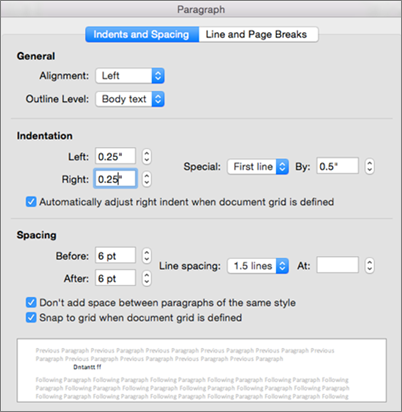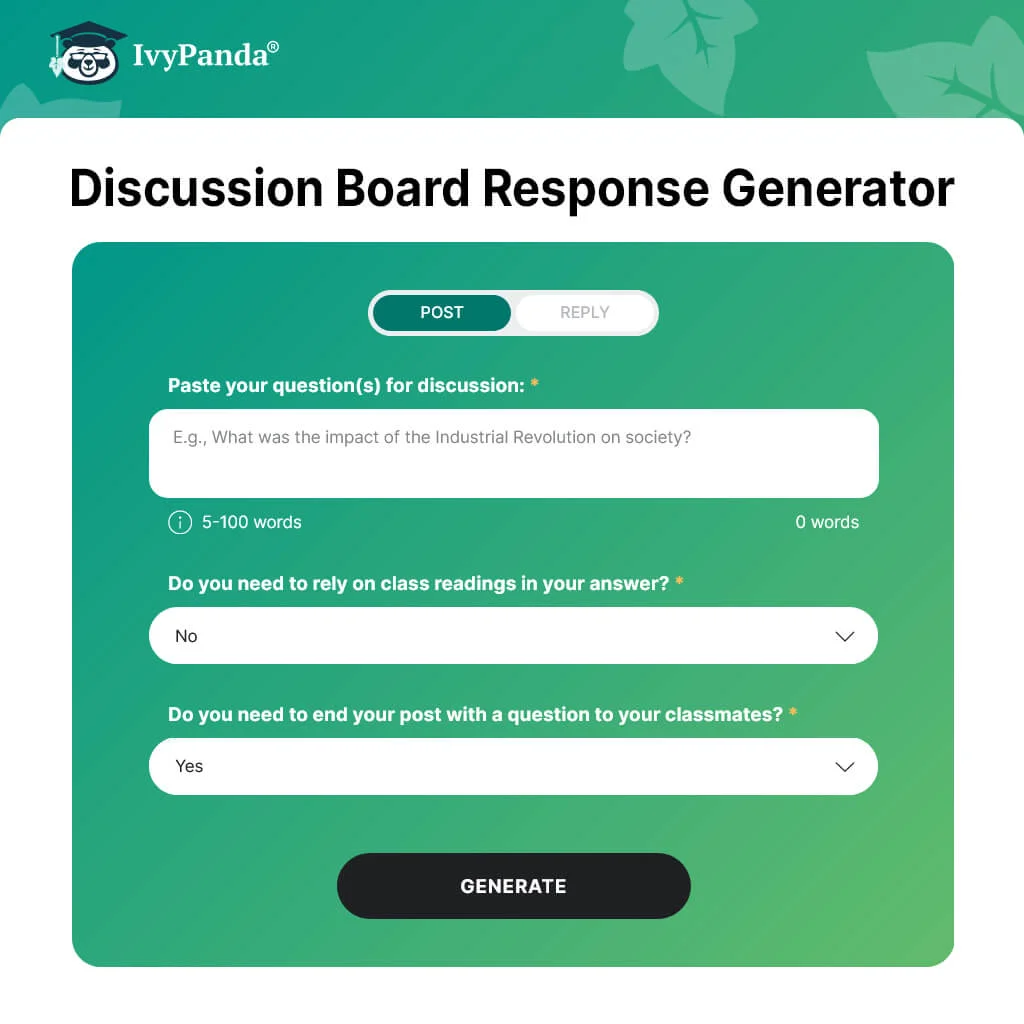How to Write a 250 Word Essay on Leadership
Learn how to craft a powerful 250-word leadership essay that stands out. Discover tips on choosing the right examples, structuring your narrative, and showcasing your growth and future goals to make a compelling impact.
Why Leadership Essays Matter
Leadership essays are crucial for college applications. They show your initiative, responsibility, and ability to inspire others. These essays are a chance to stand out from other applicants.
Writing about leadership lets you highlight your unique experiences and skills. You get to showcase how you’ve led a team, overcome challenges, or motivated peers.
Colleges want students who can bring positive change. A well-crafted leadership essay demonstrates that you’re ready to take on that role.
These essays aren’t just about listing achievements. They’re about showing your growth and potential as a leader. How have you learned from your experiences? How have you made a difference?
Leadership isn’t static. It’s an evolving journey. Your essay should reflect this, showing how you’ve developed and what you’ve learned along the way.
Writing a compelling leadership essay can set you apart. It’s your platform to shine and show colleges why you’re a perfect fit for their community.
Choosing the Right Leadership Example
Choosing the right leadership example is crucial for a compelling essay. It’s not just about picking any experience; it’s about selecting one that truly shows your leadership skills and fits the essay prompt. Here’s how to make the best choice:
- Passion Projects: These are activities you love and are committed to. They often have personal meaning and show your dedication and initiative. Think about something you’ve pursued because you’re genuinely interested in it.
- Standout Achievements: These include any activity where you’ve excelled or been recognized. Maybe you led a team to win a competition or organized a successful event. These examples are great for showing your ability to lead and get results.
- Unique Experiences: Sometimes, the most interesting leadership stories come from unusual experiences. Maybe you started a small community project or led a group on an adventure. These can make your essay stand out by offering a fresh take on leadership.
When deciding which activity to write about, consider these tips:
- Impact and Recognition: Did the activity make a real difference? Were you praised for your efforts? Activities that led to noticeable changes or got recognition can be very persuasive.
- Personal Growth: How did the experience help you grow as a leader? Did it challenge you in new ways? Choose an example where you learned important lessons and developed new skills.
- Relevance to the Prompt: Make sure the example you choose directly addresses what the essay asks for. If the prompt wants a specific type of leadership experience, pick one that fits.
By carefully selecting and evaluating your leadership example, you can write an essay that not only highlights your achievements but also shows how you’ve grown and your potential as a leader.
Structuring Your Leadership Essay
Structuring your leadership essay is key to making a strong impression. Here’s how to do it with both the Narrative and Montage approaches:
Narrative Approach
- Identify the Problem: Start with a challenge you faced. This sets the stage and grabs attention.
- Raise the Stakes: Explain why solving this issue mattered. Highlight the urgency.
- Describe What You Did: Detail the actions you took. Be specific.
- Clarify Your Role: Emphasize your involvement. Show why you were essential.
- Share the Impact: Conclude with the results and what you learned. Reflect on the growth.
Montage Approach
- Brainstorm Values: List common and unique values related to your leadership experience.
- Tie Values to Examples: Use specific instances to illustrate these values.
- Order Your Details: Arrange your points logically, often chronologically.
Ensure Logical Flow
- Beginning: Introduce the main theme or challenge.
- Middle: Develop the story or examples.
- End: Summarize the impact and personal growth.
Staying within the 250-word limit means being concise. Focus on clear, vivid descriptions and avoid unnecessary details. This keeps your essay sharp and impactful.
Crafting a Compelling Opening
Crafting a compelling opening for your leadership essay is essential. You need to grab the reader’s attention right from the start. Think about starting with a personal anecdote or a thought-provoking question related to leadership.
Imagine beginning with a story that highlights a pivotal moment in your leadership journey. This doesn’t have to be a grand event. It could be a small but significant experience that had a big impact on you or others. For instance, you might recall a time when you had to step up in a group project, even though it wasn’t your assigned role. This shows initiative and the ability to lead under pressure.
Another effective strategy is to pose a question that makes the reader reflect on the nature of leadership. Something like, “What does it truly mean to lead?” This not only engages the reader but also sets the stage for your personal insights and experiences.
The opening sentence should be engaging and make the reader want to continue reading. Avoid generic statements and aim for something unique to your experience. This makes your essay stand out from the rest.
Your introduction should also hint at the broader themes you’ll explore in your essay. Whether it’s overcoming challenges, inspiring others, or personal growth, give the reader a glimpse of what’s to come. This sets up a clear roadmap for your essay and keeps the reader interested.
The goal of your opening is to hook the reader and make them eager to learn more about your leadership journey. Make it personal, engaging, and reflective of your unique experiences. This sets the tone for a powerful and memorable essay.
Describing Your Leadership Role
Describing your leadership role is all about clarity and specifics. You want the reader to understand exactly what you did and how it made a difference. Here’s how to nail it:
- Define Your Role: Start by clearly stating your position. Were you the team leader, project manager, or event coordinator? This sets the stage for your story.
- Outline Responsibilities: List out the main tasks you were in charge of. Did you delegate tasks, organize meetings, or handle communication? Make it clear what your job entailed.
- Highlight Actions Taken: Focus on the specific actions you took. Did you create a project plan, mediate conflicts, or motivate your team? Use active verbs to make your role dynamic.
- Showcase Achievements: Mention any successes or milestones your leadership helped achieve. Did your team complete the project ahead of schedule, win an award, or exceed targets? Highlight these accomplishments.
- Reflect on Impact: Explain how your leadership made a difference. Did it improve team morale, solve a critical problem, or lead to innovative ideas? Reflect on the positive changes your leadership brought about.
For example, if you led a community service project, you might say: “As the project coordinator, I organized weekly meetings, assigned tasks, and managed communication with local partners. My leadership helped us complete the project ahead of schedule, resulting in a 30% increase in community engagement.”
Highlighting Challenges and Solutions
Facing challenges is a key part of any leadership journey. Highlighting these moments in your essay can show your resilience and problem-solving abilities. When writing about challenges, be specific. Describe the problem you encountered and why it was significant.
Talk about the steps you took to address the issue. Did you brainstorm solutions with your team? Maybe you had to make a tough decision quickly. Explain your thought process and the actions you implemented. This shows your ability to handle pressure and think strategically.
It’s important to also discuss the outcome. What was the result of your efforts? Did you manage to turn a failing project around? Perhaps you resolved a conflict that was affecting team morale. Highlight the positive changes your leadership brought about.
Reflect on what you learned from these challenges. Did they make you more adaptable? Did you develop new skills? Showing personal growth is crucial. It demonstrates that you’re not just a leader who achieves results, but one who evolves through experiences.
Your essay should paint a clear picture of your leadership journey. By focusing on challenges and solutions, you can convey a compelling story of resilience and growth. This approach not only highlights your achievements but also your potential to lead effectively in the future.
Showcasing Personal Growth
Showcasing personal growth is essential in a leadership essay. Reflecting on your development helps paint a fuller picture of your journey.
Start by considering key moments that influenced your growth. Think about challenges you faced and how you overcame them. Did you develop new skills or discover something new about yourself?
Discuss specific lessons learned. Maybe you realized the importance of listening to team members or found a new way to handle stress. Articulating these lessons shows self-awareness and a commitment to continuous improvement.
Next, highlight how these experiences have shaped your leadership style. Are you more collaborative now? Do you approach problems differently? Share examples that illustrate these changes.
Personal growth isn’t just about big transformations. Small, consistent improvements matter too. Reflect on how you’ve refined your approach and what this means for your future leadership roles.
Connecting Leadership to Future Goals
Connecting your leadership experiences to your future goals is essential. It shows how your past has prepared you for the challenges and opportunities ahead.
Start by reflecting on your leadership roles. Think about the skills you’ve gained and how they’ve shaped your ambitions. Did leading a project enhance your problem-solving abilities? Maybe managing a team fine-tuned your communication skills. Highlight these connections.
Next, consider your future aspirations. Are you aiming for a leadership role in your university’s student government? Maybe you want to lead a research team or start a new club. Explain how your past experiences have equipped you to excel in these future roles.
Show the reader that you’re forward-thinking. Link your leadership journey to your academic and career goals. For instance, if you plan to major in business, discuss how your leadership in a marketing club has given you insights into team dynamics and strategic planning.
Be specific. Detail how the lessons learned from past leadership roles will help you tackle future challenges. If you’ve learned to navigate conflicts, explain how this will aid you in managing diverse opinions in group projects or initiatives.

Using Active Verbs
Using active verbs can transform your leadership essay from bland to dynamic. Active verbs make your sentences lively and engaging, showing exactly what you did and the impact you had. Here are some tips and examples:
- Lead: “I led a team of five students to organize a charity event.”
- Implemented: “I implemented a new system to streamline our project workflow.”
- Motivated: “I motivated my peers to push through challenging times.”
- Facilitated: “I facilitated discussions during team meetings to ensure everyone’s voice was heard.”
- Coordinated: “I coordinated with local businesses to secure sponsorships for our event.”
- Resolved: “I resolved conflicts within the team to maintain a positive working environment.”
- Initiated: “I initiated a mentorship program to support incoming students.”
- Organized: “I organized weekly study groups to help classmates prepare for exams.”
- Executed: “I executed a marketing campaign that increased our club’s membership by 30%.”
Using these active verbs, you can paint a clearer picture of your actions and their outcomes. For example, instead of saying “I was in charge of the project,” you could say, “I led the project, implemented new strategies, and resolved team conflicts.”
Active verbs not only make your writing more engaging but also demonstrate your proactive approach and effectiveness as a leader. By incorporating them, you showcase your ability to take charge, make decisions, and drive positive results.
For those looking to further refine their essays, exploring resources on crafting strong thesis statements can be invaluable. Understanding the importance of a thesis statement in underpinning the essay’s argument can significantly enhance your writing. Additionally, utilizing AI tools, such as the Jenni AI thesis statement generator, can streamline the process.
Active verbs can also help you stay within the word limit. They convey action and impact concisely, allowing you to describe your leadership role effectively without unnecessary words. This makes your essay sharper and more impactful, helping you stand out.
Staying Within the Word Limit
Staying within the 250-word limit can be tricky but manageable. Start by writing freely. Don’t worry about the word count initially. Let your ideas flow and get everything down. This gives you a full scope of what you want to say.
Once you have your draft, it’s time to trim. Focus on the most impactful details. Look for any repetitive points or unnecessary descriptions. Ask yourself, “Does this sentence add value?” If not, cut it out.
Be concise. Use short, clear sentences. Replace phrases with single words where possible. For example, instead of saying, “I was responsible for managing and overseeing,” just say, “I managed.” This keeps your writing sharp and direct.
Prioritize your content. Decide which points are the most important and make sure they’re included. If you have to choose between a minor detail and a key leadership moment, always go with the latter. For those working on scholarship essays, it’s crucial to emphasize your unique strengths and experiences.
Use active verbs to convey more in less space. Words like “led,” “implemented,” and “resolved” are powerful and concise. They help you describe your actions clearly without using too many words.
Review your essay multiple times. Each read-through will help you spot more areas to tighten. You’ll be surprised how much you can trim while still maintaining the essence of your story. This approach ensures your essay stays within the limit but remains compelling and impactful.
Revising and Editing
Revising and editing your leadership essay is crucial. You want it to be clear, coherent, and engaging. Here’s a handy checklist to help you polish your work:
- Grammar Check: Ensure all sentences are grammatically correct. Look out for subject-verb agreement, correct tense usage, and proper sentence structure.
- Punctuation: Check for proper punctuation. Make sure commas, periods, and other punctuation marks are correctly placed. Misplaced punctuation can alter the meaning of your sentences.
- Flow and Coherence: Read through your essay to ensure it flows smoothly. Each paragraph should connect logically to the next. If a section feels out of place, consider reordering your points.
- Conciseness: With a 250-word limit, every word counts. Cut out any unnecessary words or repetitive phrases. Be direct and to the point.
- Active Voice: Ensure you’re using active verbs. These make your essay more dynamic and engaging. For example, use “led” instead of “was in charge of.”
- Specificity: Be specific about your actions and their impacts. Vague statements can weaken your essay. Detail exactly what you did and the results.
- Consistency: Make sure your writing style is consistent throughout. Avoid switching between formal and casual tones.
- Spelling: Double-check for any spelling errors. Even minor mistakes can detract from your essay’s professionalism.
- Format: Ensure your essay meets any specified formatting guidelines. This includes font type, size, and margins.
Reading your essay out loud can help you catch errors you might miss when reading silently. You can also use tools like spell checkers or grammar checkers for an extra layer of review. If possible, get feedback from a friend or mentor. They might spot areas for improvement that you overlooked. .
Revising isn’t just about fixing mistakes. It’s about refining your essay to best showcase your leadership journey.
Getting Feedback
Getting feedback is crucial for refining your leadership essay. It provides new perspectives that can reveal areas for improvement you might have missed.
Start by sharing your essay with peers. They’re often in the same boat and can offer constructive criticism. Ask them specific questions like, “Does my essay flow well?” or “Are my leadership examples compelling?” This helps you get targeted feedback.
Teachers and mentors are also valuable resources. They have experience with what colleges look for and can provide insights into your essay’s strengths and weaknesses. When they suggest changes, consider how these adjustments can enhance your message.
Don’t just focus on the content. Ask for feedback on grammar, punctuation, and clarity. Small errors can distract from your story, so it’s important to polish these aspects.
Use tools like Jenni AI to further refine your essay. Jenni AI’s real-time editing and suggestions can help you catch mistakes and improve your writing style. Its citation support ensures your sources are correctly formatted, maintaining your academic integrity. For additional writing tips, you can explore the Jenni AI blog, which features a comprehensive collection of writing guides and examples to enhance various essay forms.
After incorporating feedback, read your essay aloud. This helps you catch any awkward phrasing or unclear sentences. It’s also a good way to ensure your essay feels natural and engaging.
Getting feedback isn’t just about fixing mistakes. It’s about making your essay the best it can be. By seeking input from others and utilizing helpful tools, you can craft a leadership essay that truly stands out.
Examples of Leadership Essays
Example 1: Leading a Community Project
Organizing a community clean-up taught me invaluable leadership skills. As the project coordinator, I identified a local park in need of attention. My role involved rallying volunteers, securing supplies, and coordinating with city officials. I created a schedule, delegated tasks, and ensured everyone knew their responsibilities. Challenges arose, such as a shortage of volunteers and inclement weather. I addressed these by recruiting more participants through social media and rescheduling the event. Our efforts led to a cleaner park and stronger community bonds. This experience underscored the importance of adaptability and effective communication in leadership.
Example 2: Captain of the Debate Team
As captain of my high school debate team, I faced the dual challenge of improving team performance and fostering a supportive environment. I organized practice sessions, provided feedback, and encouraged collaboration. My approach shifted from authoritative to collaborative, which boosted team morale and performance. We won several tournaments, and my peers recognized my leadership. This role taught me the value of empathy and active listening. I realized that leadership isn’t just about giving orders; it’s about inspiring and empowering others to achieve their best.
Example 3: Leading a Science Fair Project
Leading my team for the state science fair was a challenging yet rewarding experience. We chose a complex project on renewable energy. As the team leader, I managed research, delegated tasks, and ensured we met deadlines. We faced setbacks, like equipment malfunctions and differing opinions. I facilitated discussions to resolve conflicts and encouraged innovative solutions. Our project won first place, and I learned the importance of perseverance and creative problem-solving. This experience showed me that effective leadership requires patience and a willingness to embrace diverse perspectives.
Recap and Final Tips
Summing up, writing a compelling 250-word leadership essay is all about clarity, conciseness, and impact. Start with a strong opening that grabs attention, use clear examples to illustrate your leadership experiences, and highlight the challenges and solutions along the way.
Your role should be well-defined, with specific actions and outcomes that showcase your abilities. Use active verbs to keep your writing dynamic and engaging. Reflect on personal growth and connect your past experiences to future goals. This not only shows your development but also your forward-thinking approach.
Stay within the word limit by trimming unnecessary details and focusing on the most impactful moments. Each word should add value to your essay.
Nd edit thoroughly. Check for grammar, punctuation, and flow. Seek feedback from peers, mentors, or use tools like Jenni AI to refine your writing further.




 Pro tip
If you’ve used our service before, ask your previous writer to work on your new orders!
Pro tip
If you’ve used our service before, ask your previous writer to work on your new orders!





























